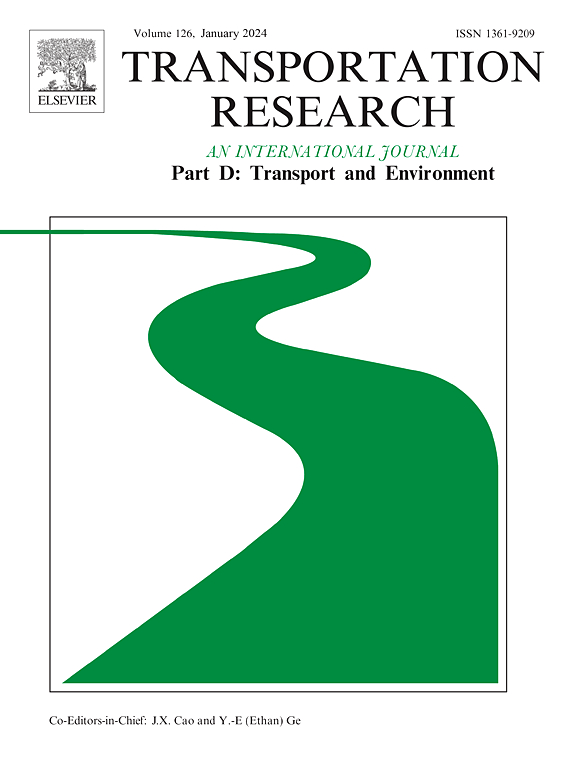Commuting CO2 emissions and built environment around residences and workplaces: Income disparities
IF 7.7
1区 工程技术
Q1 ENVIRONMENTAL STUDIES
Transportation Research Part D-transport and Environment
Pub Date : 2025-09-23
DOI:10.1016/j.trd.2025.105007
引用次数: 0
Abstract
Understanding the effects of the built environment (BE) on commuting CO2 emissions is critical for developing low-carbon cities and advancing sustainable urban development. However, few studies have jointly assessed the effects of BE around residences and workplaces, especially with respect to income-based disparities in high-density urban contexts. In this study, cross-classified multilevel modeling is applied to household travel survey data from Xi’an, a high-density Chinese city. The results show that commuters with higher income generate disproportionately higher commuting CO2 emissions and exhibit greater sensitivity to the BE attributes. Distance to the city center from residences and transit stations, parking lot density, and job accessibility around workplaces are key BE predictors of commuting CO2 emissions. Unlike in low-density cities, high density and mixed land use are unimportant for carbon reduction in dense urban environments.
通勤二氧化碳排放和住宅和工作场所周围的建筑环境:收入差距
了解建筑环境对通勤二氧化碳排放的影响对于发展低碳城市和推进城市可持续发展至关重要。然而,很少有研究联合评估了在住宅和工作场所周围的BE的影响,特别是关于高密度城市环境中基于收入的差异。在本研究中,交叉分类多层次模型应用于中国高密度城市西安的住户出行调查数据。结果表明,高收入通勤者产生的通勤二氧化碳排放量不成比例地高,并且对BE属性表现出更大的敏感性。住宅和中转站到市中心的距离、停车场密度和工作场所周围的工作可达性是通勤二氧化碳排放量的关键BE预测指标。与低密度城市不同,高密度和混合土地利用对高密度城市环境中的碳减排并不重要。
本文章由计算机程序翻译,如有差异,请以英文原文为准。
求助全文
约1分钟内获得全文
求助全文
来源期刊
CiteScore
14.40
自引率
9.20%
发文量
314
审稿时长
39 days
期刊介绍:
Transportation Research Part D: Transport and Environment focuses on original research exploring the environmental impacts of transportation, policy responses to these impacts, and their implications for transportation system design, planning, and management. The journal comprehensively covers the interaction between transportation and the environment, ranging from local effects on specific geographical areas to global implications such as natural resource depletion and atmospheric pollution.
We welcome research papers across all transportation modes, including maritime, air, and land transportation, assessing their environmental impacts broadly. Papers addressing both mobile aspects and transportation infrastructure are considered. The journal prioritizes empirical findings and policy responses of regulatory, planning, technical, or fiscal nature. Articles are policy-driven, accessible, and applicable to readers from diverse disciplines, emphasizing relevance and practicality. We encourage interdisciplinary submissions and welcome contributions from economically developing and advanced countries alike, reflecting our international orientation.

 求助内容:
求助内容: 应助结果提醒方式:
应助结果提醒方式:


